Clematis President is one of the most common varieties among flower flowers. Such popularity of flowering shrub Liana is explained by a number of advantages and valuable properties: long and abundant flowering of large bright purple inflorescences, resistance to disease and low temperatures, endurance and unpretentiousness.
Despite all the advantages, going to grow Clematis, the basic rules of landing, care and reproduction of this charming culture should be known.
Clematis President, Plant Description
- Clematis, Lomonos, Lozinka - so differently called the same plant of the numerous kind of Clematis (Clematis) from the Lutikov family. The name "Clematis" is translated as "branch" or "Vintage" and displays the main feature of plants of this group - a lio-like deciding stem. Clematis's grade under the impressive name "President" was obtained in 1876 and was named after the President of the British Royal Gardening Community.
- The history of cultivation of Clematis in Europe began in the 16th century. In Russia, lio-like spectacular flowers appeared at the beginning of the 19th century, and in the 20th century they took their honorable place among the flower rods, thanks to the abundance of varieties and species, unusual beauty and charm.
- The main decoration of the plant is bright and numerous inflorescences, blooming lush and quite a long time. Clematis The president is characterized by large (15-17 cm in diameter), star-shaped, bright flowers. The inflorescence with the 8th sewers has a rather complicated color: a saturated purple - blue shade of petals goes to the center in a bright (bluish) color, while the purple strip in the middle and dark red anthers benefit the overall picture of blue shades.
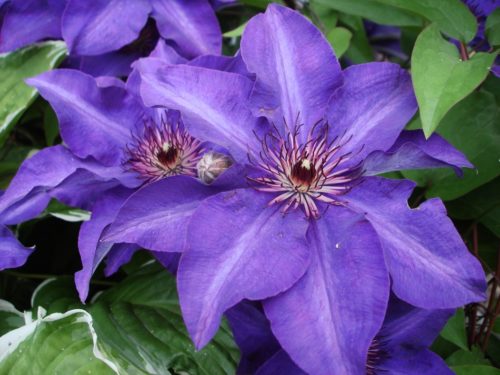
- Clematis flowers dissolve not only on the shoots of the current year, but also on last year's stems. That is why this type of Clematis blooms twice: from May to June (on the shoots of last year), and then again continues to delight the abundance of inflorescences from July and until September (on young shoots).
- A shrub leaf falling liana reaches about 2 - 2.5 m. The curly liana has a sufficiently high growth rate: under favorable conditions, it is capable of growing 5-10 cm overnight. In the period of active vegetation in one summer season, the Clematis seedling appears on average From 1 to 5 main shoots. Thus, the plant quickly braids the area provided to him, forming spectacular floral waterfalls.
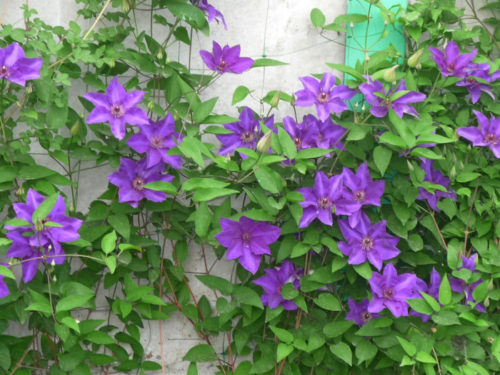
- Young curly shoots are bright green, they are spinning independently and climbed to the stand or arch. Therefore, the plant is planted taking into account the necessary decorative landscaping, providing the necessary support for Lianana. To obtain the desired landscape result, it is important to send branches on the selected trajectory and tie them. To handle young shoots should be very neat and delicate, as the green stems are still thin and brittle.
- Clematis Sheet The president has an average size, 10-15 cm in diameter, oval shape and dark green color.
- The powerful root root system is capable of firmly fixed in the soil and "leave" to the 1st meter, both deep into and styling. Under favorable conditions and competent care, the shrub grows in one place for about 30 years.
- Clematis The President refers to the group of sprawling clematis "Patzers" and to the 2nd (average) trim group.
- This large-flowered Clematis grade is considered undemanding, resistant to cold and pests, a plant. Liana is absolutely unpretentious in leaving and can grow in a variety of climatic zones.
- Clematis Grade President is great for vertical landscaping: near the arbors, in decorative arches or lattices. Also, shrub liana superbly reverses a balcony, a loggia or terrace.
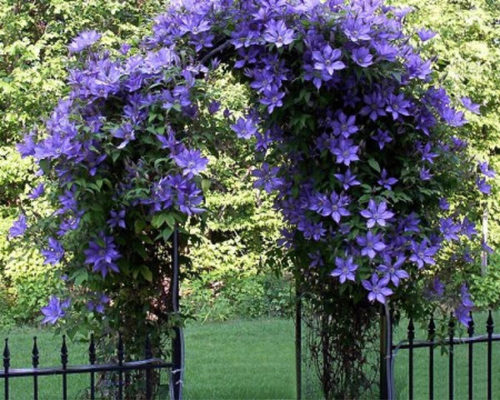
Clematis President, landing features
This grade of Clematis is often recommended for planting gardeners - beginners, because the plant is absolutely unpretentious and undemanding in care. It is enough to observe the elementary agrotechnical rules for landing and care for Clematis The president and the result in the form of a richly blooming curvature shrub will not wait long for a long time.
Place for landing Clematis President
- Clematis President is a light-affilome plant, therefore, an ideal place for landing will be sunny, protected from drafts and open winds, a plot.
- To avoid unwanted soil overheating around Liana, gardeners are recommended at the base of the shrub to plant annual plants that will protect the ground from direct sunlight.
- Stagnation of moisture adversely affects the growth and development of shrub Liana. Therefore, when landing Clematis should be avoided by the close occurrence of groundwater, lowlands, where water can accumulate and stammer. Wetlands, saline areas are also not suitable for landing Clematis.
- Special attention should be paid to Clematis, sitting near the walls of the house. Water flowing from the roof or drain should not fall on the shrub. In addition, the soil wall is usually too dry and dense, which will adversely affect the development of Liana.
- The soil for Clematis should be a fertile, water permeable, loose, with a neutral or slightly alkaline medium and a good drainage layer. The optimal version of the soil is a loamy or sandy. Raw, heavy and acidic soils for climbing lianas will be unacceptable.
Preparation for landing Clematis President
- Climbing Clematis The president can be rooted with drains, cuttings or part of the shrub.
- Guaranteed accessibility provide seedlings purchased in a container with prolonged fertilizers. When landing, the roots of such plants are practically not injured and are not damaged.
- When landing, it is important to estimate the quality of the root system and the presence on the shoots of the growth kill of Clematis, since the overall survival rate of the plant will depend on this and its further development will depend. Roots must be developed (ideally, at least 30 cm), without damage or any lesions.
- The main condition for the successful planting of Clematis will be a properly prepared landing pit. To do this, dig a sufficiently large hole in advance (from 60 to 100 cm in all directions), laid a wide (10-20 cm) drainage layer (from broken bricks, stones, broken slate), covered with a layer of humus or overwhelming, fertile Earth and all are well compacted. A peat, comprehensive fertilizers (superphosphate), bone flour, chalk or wood ash are also used as an additional feeding. Such an option of landing pit is better to prepare in advance (a month before the landing) so that the soil is completely ass, it has gone and was ready for planting a seedling.
- Additionally, a solid support is installed in the pit, which will allow in the future to hold the curious Lian and send it to shoots.
- If the groundwater is closed on the site, you can pour an artificial land of the earth, so that mature meter roots are not "mocky" in water and not rot.
- If the soil is clay and poorly water permeable, you need to take care of the natural weighing of extra moisture. To do this, you can cut the drain groove with a slope from the site of Clematis, sprinkling it on top of sand.
- Before planting the plant, it is necessary to establish supports in advance (up to 2.5 m), which will support shoots during their growth and branching.
Landing Clematis President
- Clematis President can be planted in spring, summer and autumn, but the best time for rooting is considered to be the first half of the autumn. It is this period that is characterized by high humidity and optimal (when it is no longer hot and not yet cold) the temperature regime.
- Slowing out several shrubs nearby, you should take care of the distance between them. As a rule, it is enough to leave 1.5 meters between seedlings to provide space for the optimal development of each instance.
- The dried roots of the seedling before planting are necessarily soaked in water for several hours.
- The prepared landing pit is falling asleep to the ground to half and make a small hollyk, on which the roots of the seedling are spread. When landing, the lower kidney of the saplings is deepened into the ground by about 8-12 cm. Such a bellged landing will ensure, with time, the development of the so-called. "Center for Education" with new kidneys and shoots.
- After planting, Clematis is abundantly watered with water and mulched (for example, peat). Then, as the shrub grows, gradually be satisfied with the land, so as not to form a big deepening, and did not reveal the "Center of Bunchers".
- When landing in the fall, the above-ground part of the seedling is completely cut and plunge the ground. In the spring landing - the earth is falling asleep to the first intercause.
Clematis President, care characteristics
Clematis Care The president includes basic technological methods of growing plants: watering, loosening, feeding, combating diseases and pests. A feature of the lio-like shrub is the need for periodic trimming and tapping shoots to the support.
Watering and loosening Clematis President
- For successful rooting, especially in the first period after landing, Clematis needs regular and abundant irrigation.
- The average irrigation rate is approximately 1 time per week. In the hot and dry season, the frequency of irrigation increases. It is not recommended to direct the water jet into the center of the bush, it is better to water the root.
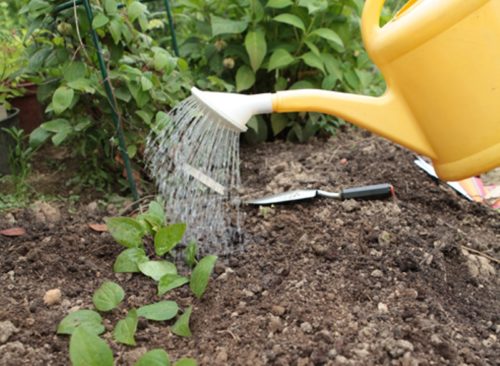
- In the first year, the development of a shrub on one single watering accounts for 10-20 liters of water, in the future the amount of water for one watering is doubled.
- After irrigation, the soil loose, periodically remove all the weed grass.
- The mulching of the priority circle will allow longer to keep the wet soil microclimate.
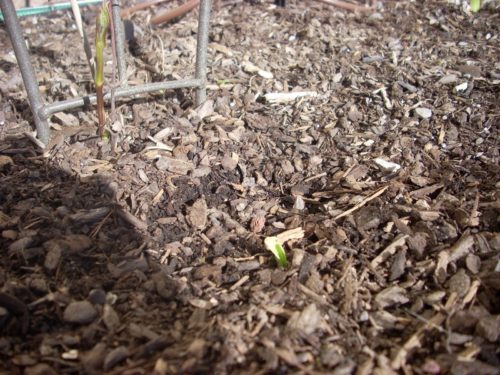
Feeding and making fertilizers for Clematis President
- Clematis feed several times over the growing season. It depends on the qualitative composition of the soil and climatic conditions of growth.
- As fertilizers, a diluted korovyan (1:10), compost, reworked manure, alternate complex organic and mineral fertilizers (20 - 40 g per 10 liters of water).
Clematis Pruning and Border President
- Clematis trimming is one of the most important agrotechnical techniques for the care of the climbing lio-like shrub. There are 3 groups of Clematis trimming, depending on the type of plant and flowering time.
- Clematis Grade President refers to the 2nd group of trimming, which is carried out in two receptions. At first, in summer, after flowering, all the old (last year) shoots to the ground. Then, in the fall, in front of winter, they cut off the shoots of this year.
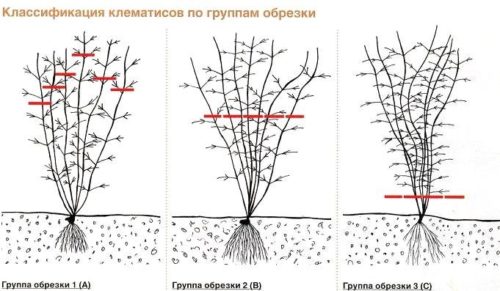
- Experienced gardeners advise on the first year of development of Clematis to remove all buds from shrub and enable the plant to "gain strength" until the next season. Prothesing of shoots in the first year also has a cardinal character: Late in the fall, all shoots are removed to the first point above the ground level. A similar technique allows you to stimulate the next year the development of new, roasting kidneys.
- During the growing season, constant sanitary trimming is carried out: remove all broken, damaged branches.
- Lianu is needed in spring, during the actual growth of shoots. It is enough only to direct the branches in the right direction and tie to the arch or a special support to the arch or a special support, then the plant will already be cling to young escapes.
Diseases and pests Clematis President
- Clematis President may be infected with viral, bacterial or fungal diseases.
- Wilt is the most severe root disease, causing shrub's withering. At the very first signs of the loss of the turgora, drying and fading, all the affected parts are removed, and the plant is poured several times with a solution of Fundazola. A fully infected dried plant is digging with a lore earth and burned, and the ground is treated with a solution of copper vapor or foundazole. Such events will prevent infecting healthy plants growing nearby.
- In the rain period, Clematis are affected by gray rot, manifests brown stains on the above-ground parts of the plant. Damaged leaves and shoots are removed, and the bush is treated with a solution of Fundazola or azocene.
- If foliage and branches were covered with a milded chance - the plant "sick" with a torment. Effective drug against the disease will be the Fundazole, Topaz or Azocene.
- Such a disease, like rust, is manifested by an orange spotted raid on the leaves and shoots of Clematis. In the fight against the disease will help the burgundy mixture.
- Less frequently, Clematis can be amazed by nematodes, which cause rot from the roots or necrosis of the above-ground parts of the plant. The deceased plant digs and burned.
- From pests, most often, the danger to Clematis represents rodents, a web tick, a wave, slugs, bugs and snails. Applying insecticides are used to combat insects (Aktellik, Aktara, Match), and mollusks are collected manually.
Zimovka Clematis President
- Clematis The President refers to the plants of the 4th group of frost resistance, which allows the shrub to carry out quite low temperatures.
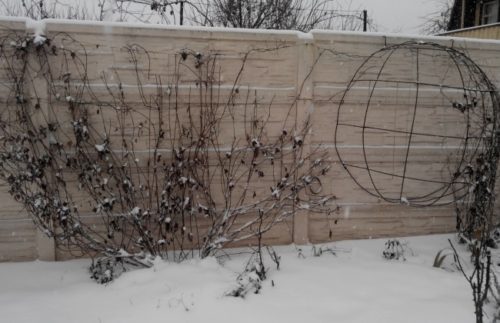
- Quite high frost resistance to Clematis The president contributes to the fact that the adult liana triggers the winter without any additional shelter. Experienced gardeners recommend only to cover the base of the bush with sawdust, peat or fall asleep with dry leaves. You should also sprinkle for the winter and young rapid seedlings of Clematis.
- In the regions with harsh winters, to prevent the filming of floral kidney, you can roll up the shoots of the current year and cover them, for example, the sweetheart. But this should be done in winter, during the occurrence of large frosts. Before that, Clematis passes a natural hardening. Remove the shelter in the spring when the threat of return freezers.
Thus, Clematis President is a large-flowered lio-like plant, hardy and undemanding in care. Correctly chosen, compliance with all key landing conditions and agrotechnology care for shrubs will allow you to grow an extraordinarily beautiful decorative plant on our site. Long-term abundant flowering, which continues almost the entire warm season, will decorate any garden or flower beds. And such an advantage of the bush, as the ability to confuse and braid support, allows the use of Clematis President to design a variety of arches, arbors and terraces.

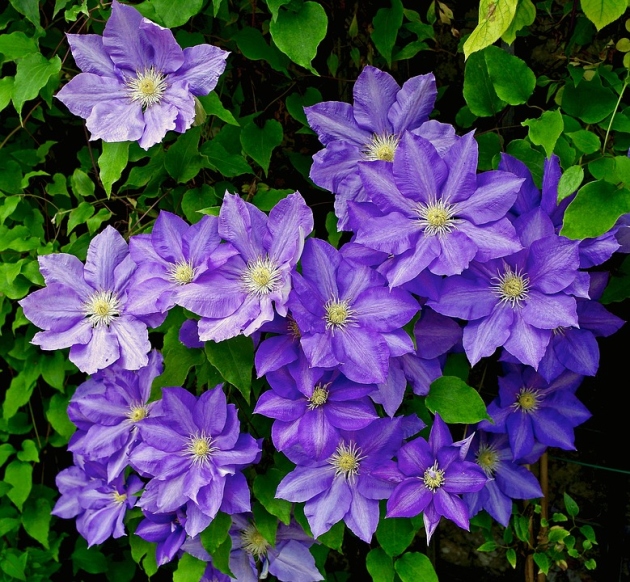
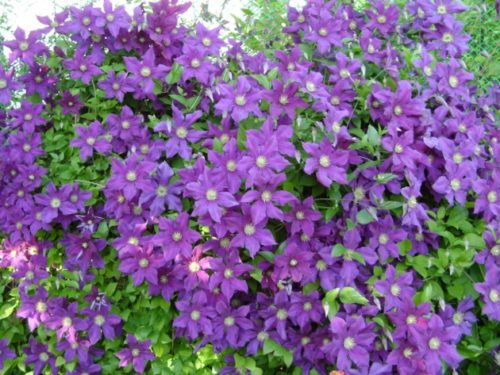
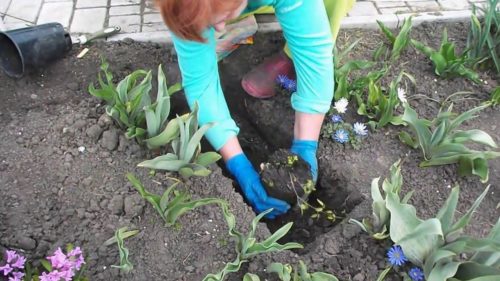
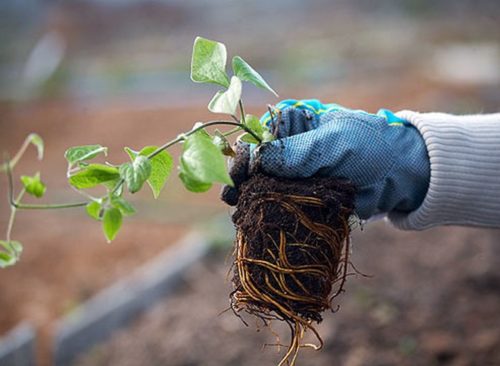
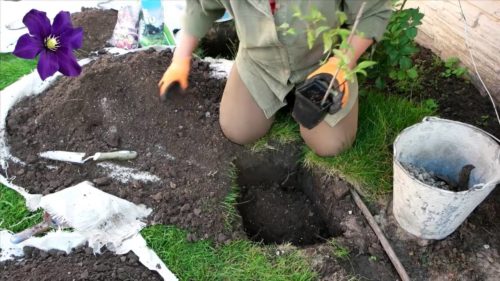
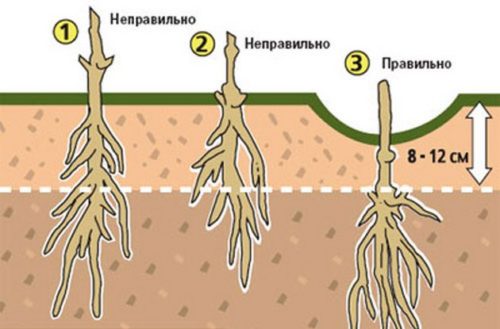
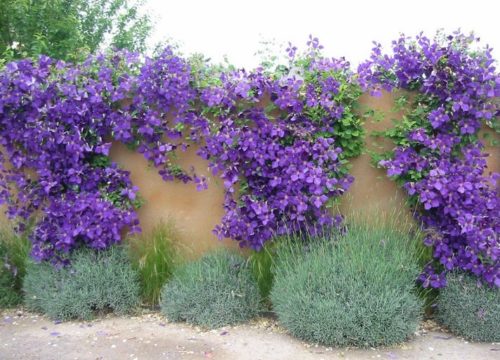
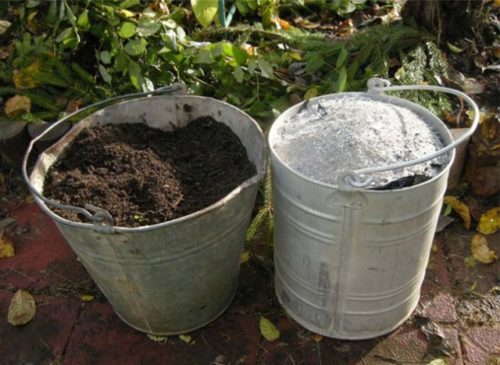
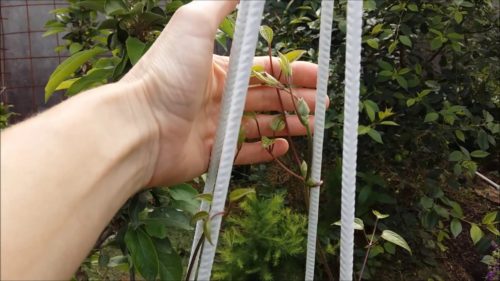
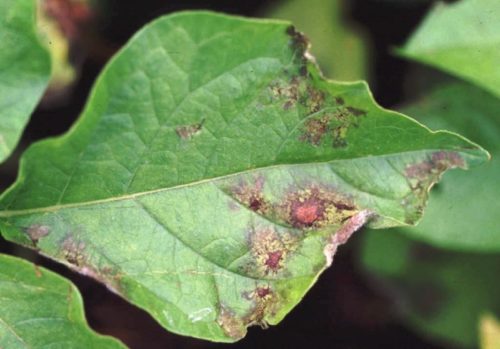
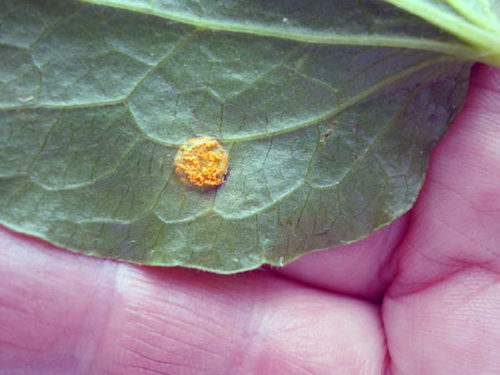
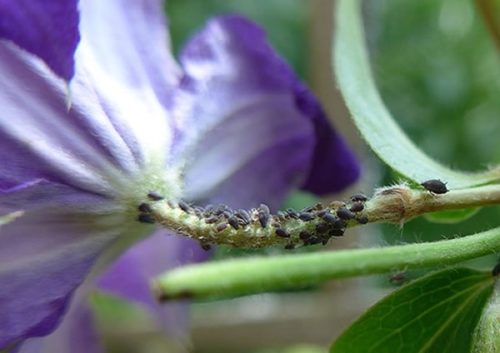
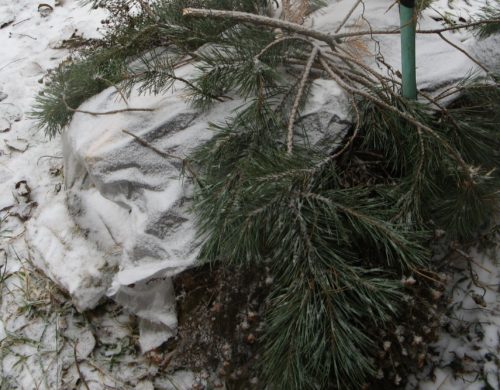
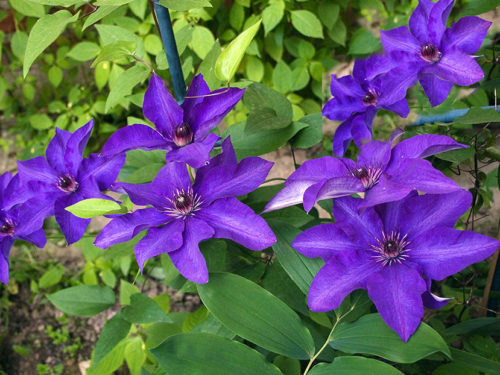
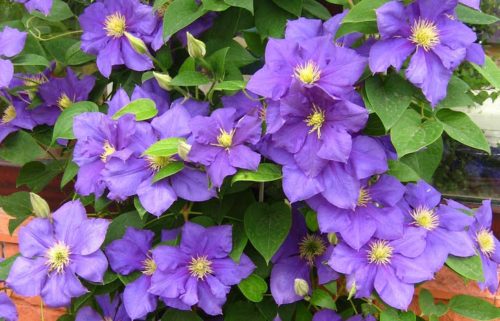
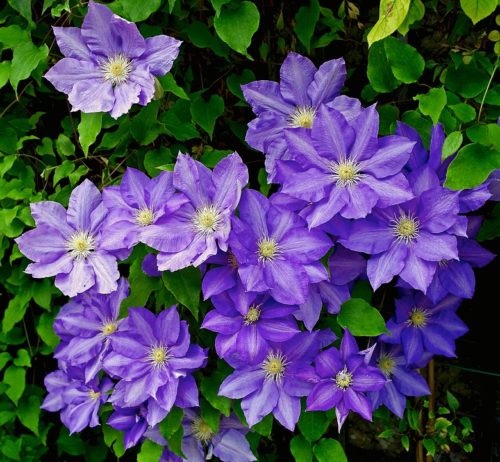
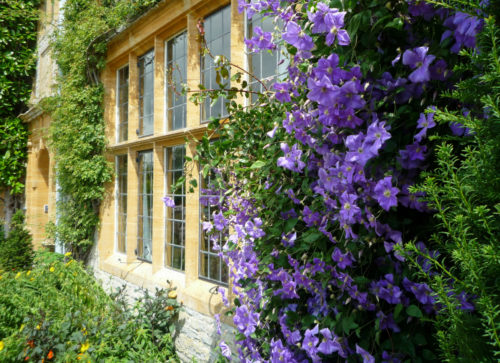

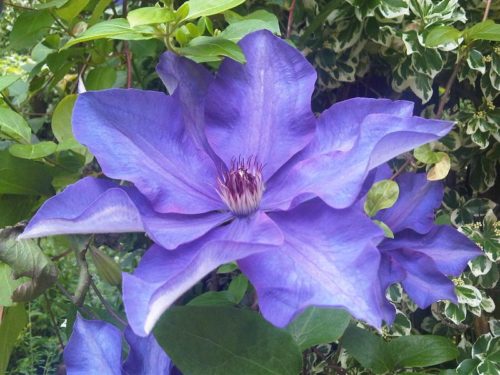
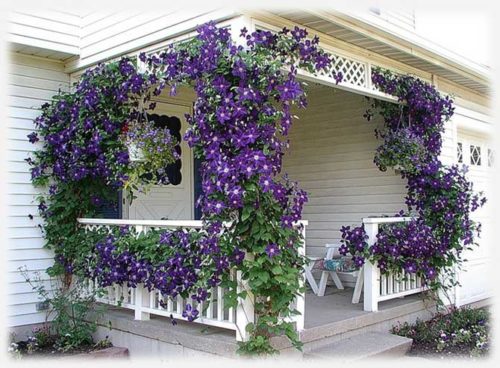
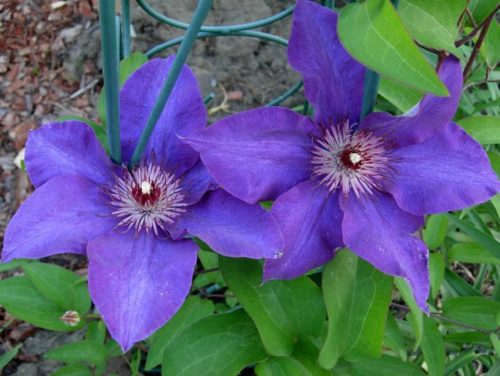
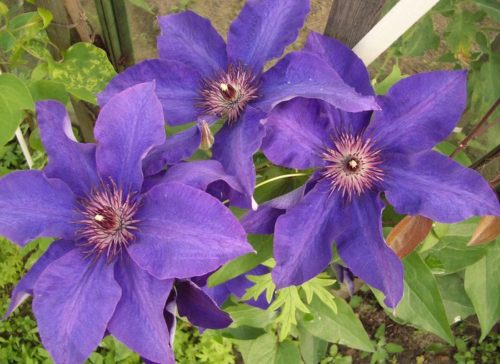













 Start a discussion ...
Start a discussion ...